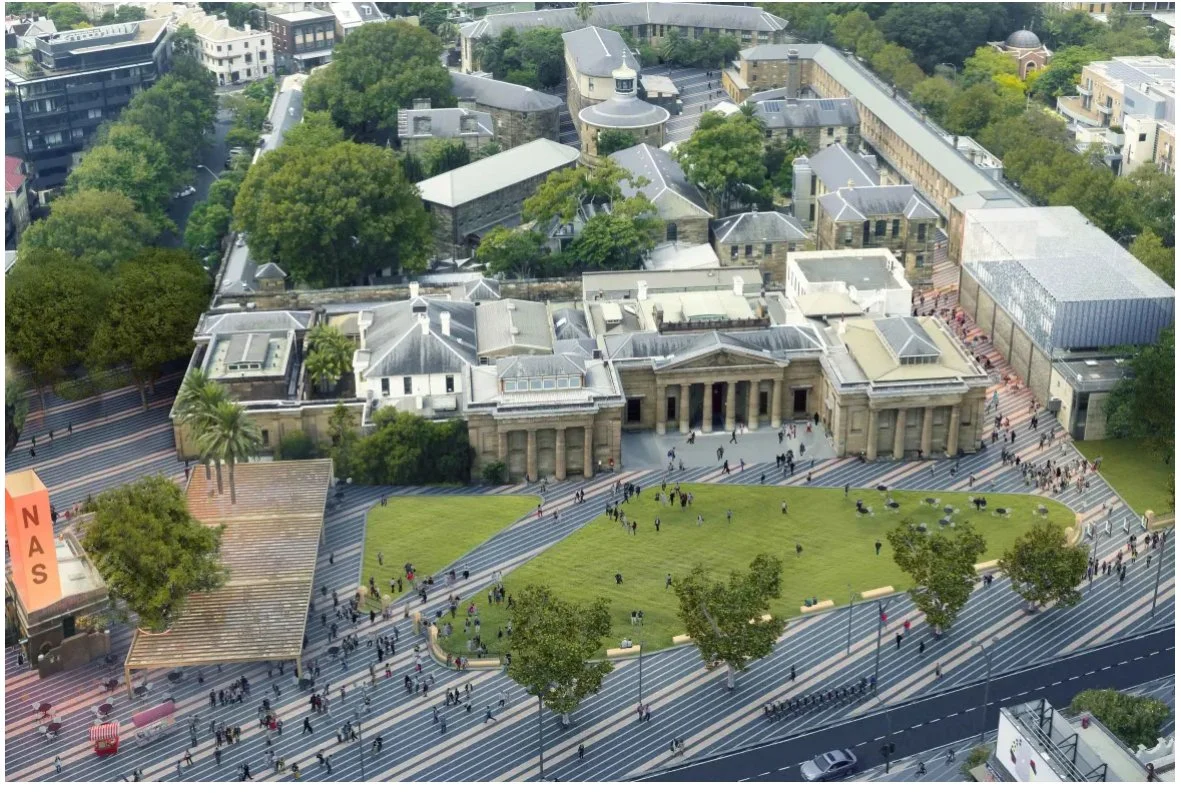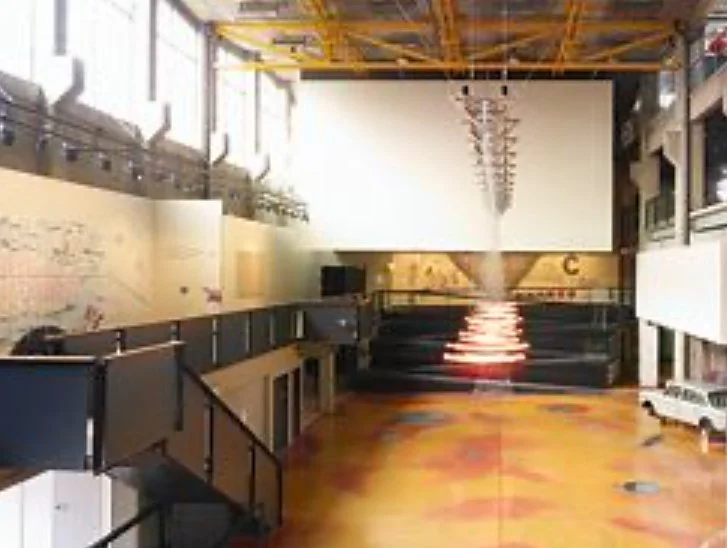Building an art museum
-

Our process
Stages of development for building an art museum
1. Vision and mission definition
The first step is to establish a clear vision and mission for the museum, aligning with the collector’s/ institution’s goals and values. This involves identifying the purpose of the museum, whether it is to preserve a private collection, lead contemporary debate, promote specific cultural narratives, or to provide engaging education programs. This stage defines the thematic focus, audience, and long-term aspirations of the institution.2. Collection assessment and strategy
Conduct an in-depth evaluation of the existing collection to identify its strengths and areas for expansion. This includes cataloging artworks, assessing their condition, and determining which works align with the museum’s vision. A collection development strategy is created to address gaps, focusing on acquiring works that enhance the narrative and cultural significance of the collection.3. Feasibility study and site selection
A feasibility study is essential to evaluate the financial, operational, and logistical aspects of the museum. This involves site analysis, audience demographics, and local regulatory considerations. Once a feasible plan is established, an appropriate location is selected, balancing accessibility, space requirements, and the surrounding environment.4. Architectural design and planning
Collaborate with architects and designers to create a space that complements the collection and provides an engaging visitor experience. The design should incorporate galleries, storage facilities, amenities, and public spaces, as well as consider sustainability, lighting, and security. Detailed planning ensures that the design aligns with the museum’s vision while adhering to building codes and best practices.5. Collection management and preservation
Establish robust systems for the care, documentation, and storage of artworks. This includes investing in climate control systems, cataloging software, and preservation protocols to ensure the longevity of the collection. Clear policies for loans, acquisitions, and deaccessions are also developed by our team.6. Programming and exhibition development
Create a program of exhibitions, educational initiatives, and public events that reflect the museum’s mission and to engage with diverse audiences. This involves planning temporary and permanent exhibitions, developing interpretative materials, and incorporating digital tools like virtual reality or interactive displays to enhance visitor engagement.7. Governance and staffing
Develop a governance structure, including a board of trustees or advisory panel, to oversee the museum’s operations and strategic direction. Recruit qualified staff, which could include curators, registrars, educators, and administrative professionals, to manage the museum and ensure its smooth functioning.8. Operational and financial planning
Create a detailed operational plan that includes budgeting, revenue projections, and funding strategies. This may involve developing an endowment, working with the family office and a sub fund, securing sponsorships, and generating income through ticket sales, events, or retail. Financial planning should also account for ongoing maintenance, acquisitions, and future growth. Tax advice is provided to establish the best financial protocol to fund onging operations and acquisitions.9. Marketing and outreach
Develop a comprehensive marketing and outreach plan to establish the museum’s presence in the cultural landscape. This includes branding, digital marketing, media relations, and community engagement strategies to attract visitors and build a loyal audience.10. Pre-launch preparation and opening
Finalise all operational aspects, from exhibition installations to staff training, and prepare for the museum’s opening. The launch should be accompanied by a high-profile event or series of events to engage the local community and international arts sector, attract media attention and promote public interest.11. Post-opening operations and growth
Once the museum is operational, focus on refining processes, gathering visitor feedback, and adjusting programming as needed. Strategic planning for future exhibitions, collaborations, and expansions ensures that the museum remains relevant and impactful over time.12. Five year strategic plan
The 5 year plan should articulate clear goals across key areas, including programming, audience engagement, financial sustainability, and institutional growth. It begins with setting measurable objectives for exhibitions, public programs, and educational initiatives that reflect the museum’s mission and resonate with diverse audiences. The plan should include strategies for audience development, with a focus on increasing visitor numbers, building membership, and fostering community partnerships. Financially, we would offer diversifying revenue streams through endowments, sponsorships, retail, and events, alongside a robust fundraising strategy. Operational goals, such as enhancing staff capacity, implementing innovative technologies, and maintaining best practices in collection management and conservation, are essential. The plan should outline a timeline for evaluating progress, adapting to industry trends, and pursuing strategic collaborations that position the museum as a dynamic and relevant institution within the cultural landscape. [image, National Art School redevelopment render] -

Our expertise
At the forefront of building and transforming art museums
Steven Alderton is a transformative leader in the art and cultural sector, bringing extensive experience, innovation, and a deep understanding of audience engagement and collection management to the task of building and redefining art museums. Steven’s career is marked by a commitment to strategic vision, storytelling, inclusivity, and innovation, making him a pivotal figure in creating cultural spaces that resonate with diverse communities. His work at institutions like the National Art School (NAS), Australian Museum, Sydney Marae Alliance and Casula Powerhouse Arts Centre demonstrates his ability to integrate contemporary relevance with historical legacy, ensuring museums remain dynamic, impactful, and future-oriented.
At the Australian Museum, Steven managed the world’s largest Pacific Collection, developing groundbreaking programs like the Pacific Youth Reconnection Program, which engaged at-risk youth with cultural taonga (treasures). He redefined the museum’s acquisition policies to include contemporary culture informed by traditional making, a forward-thinking approach that maintained the institution’s relevance in a global and diverse society. His dedication to innovation is further reflected in collaborations with Microsoft and Samsung, where he introduced virtual reality experiences, merging science and culture for immersive audience engagement. At Casula Powerhouse, Steven curated Body Pacifica, a landmark festival combining six exhibitions and public programs that celebrated Pacific culture, showcasing his expertise in programming art museums and connecting collections with contemporary audiences.
Steven’s leadership at the National Art School exemplifies his ability to drive strategic growth and transform institutions into vibrant cultural hubs. He led a complex master planning process in collaboration with the NSW Government and Tonkin Zulaikha Greer architects, securing a 45-year lease for NAS and achieving State Significant Organisation status. His efforts resulted in a 500% increase in philanthropic revenue through the establishment of the NAS Foundation, fostering relationships with benefactors like the Minderoo Foundation and the Margaret Olley Art Trust. Steven’s ability to merge financial resilience with cultural vision transformed NAS into a thriving precinct for art, education, and public engagement.
We offer unparalleled expertise to private collectors seeking to establish a private art museum, providing strategic guidance at every stage of development. We will ensure the project reflects the collector's vision while aligning with global standards of museum design, operations, and cultural significance. From conceptualisation to realisation, our deep understanding of the art world, museum management, and audience engagement provides a strong foundation for creating a unique and impactful cultural space.
Steven begins by collaborating with the collector to define the museum's mission, vision, and curatorial direction. He advises on how the museum can reflect the collector’s personal narrative while addressing broader cultural, educational, or philanthropic goals whilst outlining key themes of the collection, identifying gaps, and suggesting acquisitions that align with the museum's identity. Steven guides collectors or institutions in selecting an appropriate site for the museum, ensuring that it meets both logistical and aesthetic requirements. He collaborates with architects, planners, and designers to create a space that is not only functional but also a reflection of the collection’s character and purpose.
Steven works closely with the collector to refine and expand the art collection, identifying key works and emerging artists to enhance the museum’s narrative. He provides expert guidance on acquisition strategies, collection care, and the implementation of cataloging systems to ensure the long-term preservation and management of the artworks.Drawing on his extensive experience in curating exhibitions and public programs, Steven helps design a dynamic program of exhibitions, educational initiatives, and events that resonate with diverse audiences. He emphasises the importance of storytelling and cultural relevance, ensuring the museum becomes a vibrant space for dialogue and learning.
Steven advises on the development of sustainable business models, including funding strategies, endowment planning, and operational budgeting. He assists in building partnerships with sponsors, benefactors, and community stakeholders to secure financial stability and enhance the museum’s impact.
To establish the museum as a cultural landmark, Steven offers strategies for branding, marketing, and public relations. His expertise ensures that the museum’s identity is effectively communicated to local and global audiences, building anticipation and engagement even before its launch.
Steven provides ongoing support post-launch, offering advice on governance, staff training, and strategic growth, writing a 5 year strategic plan to articulate a clear and dynamic future. He ensures that the museum remains adaptable to future trends while staying true to its foundational vision, fostering its role as a significant cultural institution. [image, Casula Powerhouse Arts Centre]